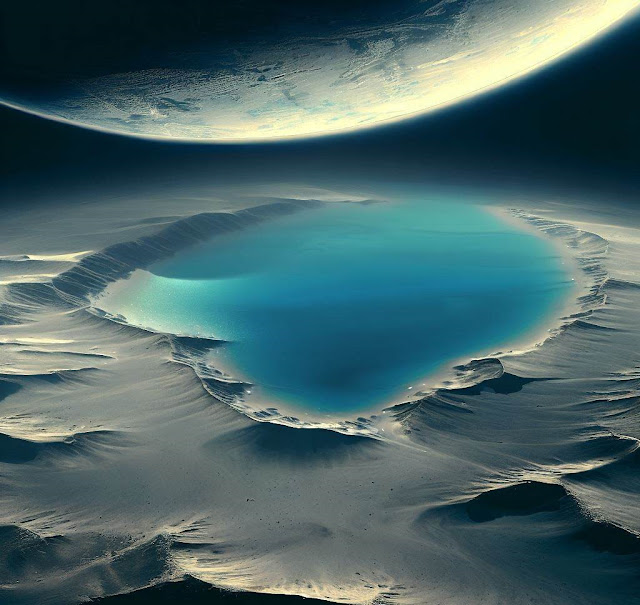
Introduction
In a groundbreaking discovery, scientists have identified a staggering 300 billion tons of water on the Moon. This revelation, which has far-reaching implications for future lunar missions and space exploration, marks a significant milestone in our understanding of the Moon’s resources. This article delves into the details of the discovery, its scientific significance, and the potential benefits for humanity’s ambitions in space.
The Discovery
Research and Methodology
The discovery was made by a team of scientists using data from multiple lunar missions, including NASA’s Lunar Reconnaissance Orbiter (LRO) and the Indian Space Research Organisation’s (ISRO) Chandrayaan-2. Advanced spectroscopic techniques allowed the researchers to detect and quantify the presence of water in the form of ice and hydrated minerals across the lunar surface.
Key Findings
The scientists identified vast quantities of water ice, primarily concentrated at the Moon’s polar regions, where permanently shadowed craters provide a cold trap for ice. Additionally, smaller amounts of water were found in the lunar soil, distributed more widely across the Moon’s surface. The total estimated volume of water is approximately 300 billion tons, an amount that has astonished the scientific community.
Scientific Significance
Revising Lunar Theories
This discovery challenges previous assumptions about the Moon’s dryness and necessitates a revision of lunar geological models. It suggests that water has been a persistent feature of the Moon’s environment, possibly delivered by comets, asteroids, or solar wind interactions over billions of years.

Implications for Lunar History
Understanding the distribution and origins of lunar water provides insights into the Moon’s geological history and the early solar system. This knowledge could help scientists reconstruct the Moon’s formation and its evolutionary path, offering clues about Earth’s own history and the broader cosmic context.
Potential Benefits
Supporting Human Exploration
The presence of abundant water on the Moon is a game-changer for future human exploration. Water is essential for sustaining life, and its availability on the Moon could support long-term human missions, reducing the need to transport large quantities from Earth.
Drinking Water and Oxygen
Water can be used for drinking and other life support needs for astronauts. Additionally, through electrolysis, water can be split into hydrogen and oxygen, providing breathable air and rocket fuel, making lunar bases more sustainable and less reliant on Earth supplies.
Enabling Lunar Colonization
The discovery of significant water resources opens the door to the possibility of establishing permanent human colonies on the Moon. These colonies could serve as bases for further exploration of the solar system, including missions to Mars and beyond.
Economic and Scientific Opportunities
Mining and Industry
Water is a critical resource for in-situ resource utilization (ISRU), a concept that involves using local materials for construction and manufacturing. The availability of water ice could support mining operations and the production of building materials, creating a self-sustaining lunar economy.
Scientific Research
Lunar water offers numerous opportunities for scientific research. Studying the water’s isotopic composition and distribution can reveal much about the Moon’s interactions with the solar wind and the space environment. Moreover, lunar ice could contain ancient organic compounds, providing a window into the early solar system’s chemistry.
Challenges and Next Steps
Technical and Logistical Challenges
Despite the promising prospects, extracting and utilizing lunar water poses significant technical and logistical challenges. Developing the technology to mine, process, and transport water on the Moon will require substantial investment and innovation.
International Collaboration
The discovery highlights the need for international collaboration in space exploration. Coordinating efforts among space agencies, such as NASA, ESA, ISRO, and others, will be crucial for the successful utilization of lunar water resources.
Future Missions
Several upcoming missions aim to further investigate lunar water. NASA’s Artemis program, which plans to return humans to the Moon by the mid-2020s, includes objectives related to exploring and utilizing lunar water. Additionally, other space agencies and private companies are developing missions to assess and capitalize on this vital resource.
Conclusion
The discovery of 300 billion tons of water on the Moon represents a monumental breakthrough in space exploration. This finding not only enhances our understanding of the Moon’s geology and history but also paves the way for sustained human presence and economic activities on the lunar surface. As scientists and engineers tackle the challenges of utilizing this resource, the dream of a thriving lunar colony and a gateway to the broader solar system becomes increasingly attainable. This discovery marks the dawn of a new era in space exploration, filled with promise and potential for future generations.


No comments:
Post a Comment